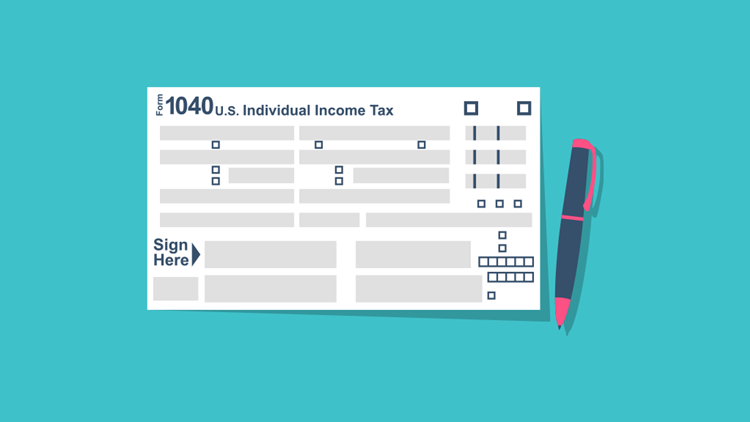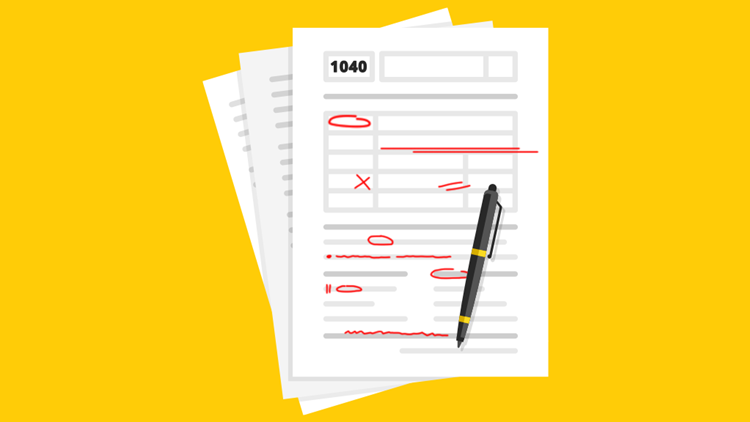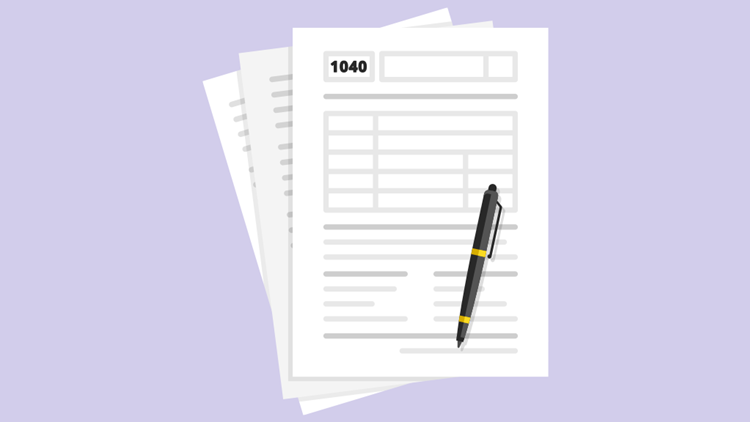by | Jan 26, 2022 | Tax Tips and News
Much attention has been given lately to the Child Tax Credit and its advance payments. But another credit is available if the taxpayer’s dependents aren’t their children.
This credit is for other dependents other than children. Unlike the Child Tax Credit, the credit for other dependents is non-refundable, meaning it can reduce or even eliminate a taxpayer’s tax bill, but can’t be refunded if part of the credit amount is left over.

What dependents qualify?
The IRS limits the maximum amount for each qualifying dependent at $500, and they must fall under one of the following categories:
- Dependents who are age 17 or older.
- Dependents who have individual taxpayer identification numbers.
- Dependent parents or other qualifying relatives supported by the taxpayer.
- Dependents living with the taxpayer who aren’t related to the taxpayer.
The credit for other dependents phases out when the taxpayer’s income is more than $200,000. For married couples filing jointly, the phaseout starts at $400,000.
Which taxpayers can claim the credit?
Taxpayers can claim the credit for other dependents if:
- They claim the person as a dependent on the taxpayer’s return.
- They cannot use the dependent to claim the child tax credit or additional child tax credit.
- The dependent is a U.S. citizen, national or resident alien.
Depending on the circumstances, a taxpayer might be able to claim the child and dependent care credit and the earned income credit along with the credit for other dependents, all on the same return.
The IRS website, IRS.gov, has helpful resources that can point a taxpayer in the right direction on claiming the credit for other dependents. These include the IRS Interactive Tax Assistant and the “Does My Child/Dependent Qualify for the Child Tax Credit or the Credit for Other Dependents?” webpage.
In addition, see Publication 501, Dependents, Standard Deduction and Filing Information.
Source: Tax Tip 2022-12
– Story provided by TaxingSubjects.com
by | Jan 25, 2022 | Tax Tips and News
It’s official: the gates are open; the race is on. Tax season for 2022 is officially underway.
The IRS kicked off this year’s filing season urging taxpayers to help them get refunds out faster this year by not filing paper tax returns and instead filing electronically.
Last year, tax season didn’t get started until February 12. But the IRS will still need all the extra time it can get; the agency expects more than 160 million income tax returns to be filed for the 2021 tax year—most of them before the April deadline.

For most taxpayers, this year’s deadline is April 18. Because Washington, D.C., Massachusetts and Maine all have state holidays on the traditional deadline day of April 15, this year’s deadline to file and pay tax due is April 19 in Massachusetts and Maine and April 18 everywhere else.
Victims of federally declared disasters may have later deadlines in various locations.
There were several critical changes in the tax law that took effect in 2021, and with the ongoing challenges posed by the pandemic, IRS Commissioner Chuck Rettig says taxpayers should pay extra attention to the process of filling out their income tax returns.
“IRS employees are working hard to deliver a successful 2022 tax season while facing enormous challenges related to the pandemic,” Rettig said. “There are important steps people can take to ensure they avoid processing delays and get their tax refund as quickly as possible. We urge people to carefully review their taxes for accuracy before filing. And they should file electronically with direct deposit if at all possible; filing a paper tax return this year means an extended refund delay.”
The best-case scenario for the IRS is to get an electronically filed tax return with no math errors or other issues. When those conditions are met, the IRS estimates it can have the refund ready within 21 days of being filed, provided the taxpayer chose direct deposit.
Last year, the average refund was more than $2,800.
“There are simple steps that people can take that will help them navigate this challenging tax season,” Rettig said. “Filing electronically and using online resources instead of calling are just some of the steps that can help people avoid delays.”
“IRS employees will do everything possible with the available resources to serve taxpayers this year,” Rettig said. “We will work hard to deliver refunds quickly, serve as many people as possible and work to catch up on past tax returns affected by the pandemic. The IRS thanks you for filing your taxes, a critical part of helping our great nation.”
IRS Tips for Faster Refunds
Let’s face it: when the IRS has problems, taxpayers have problems. And if things go smoothly for the IRS, likewise they’ll likely go well for the taxpayer. So here are a few areas where the taxpayer can actually make a difference in how quickly—or slowly—they get their refund.
E-file and avoid paper returns: The IRS is still processing problem paper returns from last tax season, so adding another paper return to the pile is counterproductive for a quick refund. As we mentioned, file electronically and choose direct deposit to avoid a paper return and a long-delayed refund. Best bets for speed: a trusted tax professional for filing correctly and quickly or tax software for speed and convenience.
Extra care for EIP and advance Child Tax Credit Recipients: The IRS says people who received a third Economic Impact Payment (EIP) or advance Child Tax Credit in 2021 should use extra caution when filling out their income taxes. Taxpayers should take their time to make sure the amounts they received during the course of the tax year are entered correctly on the return. An incorrect return—whether due to faulty figuring or incorrect entries—will have to be reviewed by an IRS staffer, taking valuable time and delaying any possible refund. Some help is on the way, though; the IRS is mailing special letters about the stimulus payments and advance Child Tax Credit payment amounts. Taxpayers can also use their Online Account on IRS.gov to find the amount of their payments.
Some refunds will be later than others: The IRS is barred by federal law from issuing those refunds that result from the Earned Income Tax Credit or the Additional Child Tax Credit before the middle of February. Even if a return claiming one of those credits is filed now, the refund will be held until it can be lawfully paid out. The extra time is provided to help the IRS verify the claims and stop fraudulent refunds.
Avoid phone delays; get help online: Demand for telephone support is estimated to be above last season’s record-breaking call totals, so avoid wait times and research questions on IRS.gov instead. Check the IRS website for refund information and answers to tax questions. Taxpayers can also clear up their questions by setting up an Online Account on IRS.gov., giving them quick access to their information.
The IRS is always open: Use IRS.gov to get answers to tax questions, to check a return status or pay a tax bill. No appointment needed and no wait time. The IRS’ online tools and other resources are available 24 hours a day.
Source: IR-2022-18
– Story provided by TaxingSubjects.com
by | Jan 22, 2022 | Tax Tips and News
Millions of Americans are preparing to get their income tax returns in order for the 2021 tax year. While many are mostly concerned about getting their returns in on time, they should also be thinking about filing a correct return.
Most often, it’s the simple tax return errors that trip up taxpayers and delay refund checks. A lot of these errors are easy to prevent.
One great way to avoid errors is to use a reputable tax preparer, which can include certified public accountants, enrolled agents, or other tax pros.
To help simplify the tax-time filing experience, here’s a quick list of some tax-return errors from the IRS:
- Filing too early. While taxpayers should not file late, they also should not file prematurely. People who don’t wait to file before they receive all the proper tax reporting documents risk making a mistake that may lead to a processing delay.
- Missing or inaccurate Social Security numbers (SSN). Each SSN on a tax return should appear exactly as printed on the Social Security card.
- Misspelled names. Likewise, a name listed on a tax return should match the name on that person’s Social Security card.
- Entering information inaccurately. Wages, dividends, bank interest, and other income received and that was reported on an information return should be entered carefully. This includes any information needed to calculated credits and deductions. Using tax software should help prevent math errors, but individuals should always review their tax return for accuracy.
- Incorrect filing status. Some taxpayers choose the wrong filing status. The Interactive Tax Assistant on IRS.gov can help taxpayers choose the correct status especially if more than one filing status applies. Tax software also helps prevent mistakes with filing status.
- Math mistakes. Math errors are some of the most common mistakes. They range from simple addition and subtraction to more complex calculations. Taxpayers should always double check their math. Better yet, tax prep software does it automatically.
- Figuring credits or deductions. Taxpayers can make mistakes figuring things like their Earned Income Tax Credit, Child and Dependent Care Credit, Child Tax Credit, and Recovery Rebate Credit. The Interactive Tax Assistant can help determine if a taxpayer is eligible for tax credits or deductions. Tax software will calculate these credits and deductions and include any required forms and schedules. Taxpayers should Double check where items appear on the final return before clicking the submit button.
- Incorrect bank account numbers. Taxpayers who are due a refund should choose direct deposit. This is the fastest way for a taxpayer to get their money. However, taxpayers need to make sure they use the correct routing and account numbers on their tax return.
- Unsigned forms. An unsigned tax return isn’t valid. In most cases, both spouses must sign a joint return. Exceptions may apply for members of the armed forces or other taxpayers who have a valid power of attorney. Taxpayers can avoid this error by filing their return electronically and digitally signing it before sending it to the IRS.
To keep the wheels of processing rolling smoothly, the IRS urges taxpayers to file electronically and use direct deposit for any refund. Following our plan for avoiding return filing mistakes can help ensure there aren’t any other delays to worry about.
Source: COVID Tax Tip 2022-11
– Story provided by TaxingSubjects.com
by | Jan 21, 2022 | Tax Tips and News
The Internal Revenue Service wants employers to know the clock is ticking, and to get their Forms W-2 and other wage statements to the government very soon. The deadline is January 31.
As of 2015, employers are required by law to get their Forms W-2, Wage and Tax Statements, and Form W-3, Transmittal of Wage and Tax Statements, transmitted to the Social Security Administration by the end of January. Filing these documents ahead of the deadline helps employers avoid penalties while also helping the IRS to prevent fraud.
The employers’ deadline coincides with their deadline to get Forms W-2 into the hands of their workers by January 31, along with any Forms 1099-MISC, Miscellaneous Information, and Forms 1099-NEC, Non-Employee Compensation.
Various other due dates related to these two forms—as well as the dates forms are due at the IRS—are available in the Form 1099 instructions on the IRS website.
Keeping the lid on fraud
When employers file their W-2s and W-3s ahead of the deadline, it gives the IRS more time to detect fraud by verifying the reported income on tax returns. Early filing employers win in two ways: They avoid penalties while helping the fight against fraud.
E-filing is the preferred method of transmitting the needed forms, according to the IRS and the SSA, offering a quick, accurate and convenient method to file. More information about the W-2 filing process can be found on the SSA’s Employer W-2 Filing Instructions & Information website at SSA.gov/employer.
File timely, but file correctly
While keeping the January 31 deadline in mind, employers should also, however, understand the need to file an accurate wage statement.
The Employer Identification Number (EIN) on wage and tax statements, such as forms W-2 and W-3 for example, and on their payroll tax returns have to match the EIN assigned by the IRS to their business.
Employers should not use their Social Security number or Individual Taxpayer Identification Number (ITIN) on any form that asks for an EIN.
Sometimes, such a mismatch seems warranted. When that’s the case – let’s say an employer used an EIN on payroll tax returns different from the EIN used on their W-3 due to a change in ownership – they need to check out General Instructions for Forms W-2 and W-3. On that page, see Box H – “Other EIN used this year.”
When employers use inconsistent EINs – or use another employer’s EIN – on these filings, the result could be penalties and delays in processing the filing employer’s returns.
The IRS says the name and EIN on all statements and forms that are filed have to be consistent and match the EIN assigned to the business exactly. This applies even if an employer uses a third party payer or a different entity within their business to file the forms.
Publication 15, Employer’s Tax Guide, has more information on such third-party situations.
Extensions are available
Form 8809, Application for Extension of Time to File Information Returns, can be used by employers to request a 30-day extension to file their Forms W-2. Form 8809 has to be filed by the original January 31 deadline.
But there’s a catch.
An extension does give the employer more time to get the filing to the IRS. It does not, however, give more time to get wage statements to their employees. The employees still must receive their wage statements by January 31.
For more information on extensions, see Extension of time to furnish Forms W-2 to employees.
Need even more information? The instructions for Forms W-2 & W-3 and the Information Return Penalties page on the IRS website have it.
Source: IR-2022-15
– Story provided by TaxingSubjects.com
by | Jan 20, 2022 | Tax Tips and News
With tax time’s arrival, those Americans who don’t normally have to file an income tax return usually think their circumstances mean they have no benefit to filing a return.
This year, however, could be very different. Credits can make it happen.
The individual’s first priority should be finding out whether they have to file. The Internal Revenue Service’s Interactive Tax Assistant can help them answer that question.
Most times, the need to file is based on income, filing status and age. Other rules could come into play if the would-be filer is self-employed or can be claimed as a dependent of another taxpayer.
Basic questions may point the way
In determining whether to file, taxpayers need to answer some simple questions:
- Did the taxpayer’s employer withhold federal income tax from their pay?
- Did the taxpayer make estimated tax payments during the tax year?
- Did they overpay last year on their taxes and have it applied to their 2021 tax?
If the taxpayer can answer yes to any of these three questions, they could be due a refund. However, they will have to file an income tax return to receive it.
Reasons why some non-filers should file
While some individuals may think their income isn’t enough to warrant filing an income tax return, that income may be enough to qualify for some tax credits. These credits are refundable, meaning a qualified taxpayer can receive the credit even if their tax bill is zero.
Earned Income Tax Credit (EITC): For the 2021 tax year, a working taxpayer needed annual income of just $57,414 or less to qualify for the EITC. By filing this year, taxpayers can qualify for the credit which is worth from $1,502 to $6,728, depending on how many children they have, and the couple’s filing status.
People can use their income from either 2019 or from 2021 to calculate their credit – whichever year gives them the larger credit can be used. The EITC Assistant on IRS.gov can give taxpayers a look at their eligibility.
An important note for taxpayers claiming the Earned Income Tax Credit: the law specifies that income tax refunds with amounts for the EITC cannot go out before mid-February.
Child Tax Credit (CTC): Along with its other requirements, the CTC requires qualified taxpayers to have at least one child under the age of 18. For those taxpayers who have other kinds of dependents, there’s a different credit available.
These credits are available to taxpayers who have:
- Dependent children who are age 18 or older at the end of 2020
- Parents or other qualifying individuals they support
Taxpayers can get help in determining if they qualify for these credits by visiting the Child-Related Tax Benefits webpage on IRS.gov.
Education Credits: A pair of higher education credits can help ease the bite of going to college, sending a child to college, or even being retrained for a job. The American opportunity tax credit targets the costs of getting a four-year undergraduate degree, while the lifetime learning credit provides post-graduates and other long-term part-time students with their own credit.
The student can be the taxpayer, their spouse, or their dependent. The qualified student must have been enrolled at least half-time for one academic period. Being refundable, these credits allow taxpayers to qualify even if they don’t owe any taxes.
Use Form 8863, Education Credits, to claim the credits.
Recovery Rebate Credit: If someone missed out on one of the first two Economic Impact Payments (EIPs) or didn’t qualify for the third one, they might be able to claim the recovery rebate credit.
An individual’s 2021 tax year information is used to determine their eligibility. If they qualify, they have to file a 2021 tax return to get the credit – even if they don’t normally file.
The credit reduces any tax due for 2021 or will be included in a tax refund.
Source: COVID Tax Tip 2022-08
– Story provided by TaxingSubjects.com
by | Jan 13, 2022 | Tax Tips and News
The Internal Revenue Service says it has updated the online frequently asked questions (FAQs) for the 2021 Child Tax Credit and the Advance Child Tax Credit.
The objective, the agency says, is to help qualified taxpayers to claim the credit properly on their 2021 income tax return.
The refurbished FAQs include streamlined questions to help individual taxpayers and tax professionals alike navigate to the answers they need most.
A total of 14 topics have gotten the update treatment, including:
The updated FAQs are likely to see a lot of action.
Taxpayers who received advance payments of the Child Tax Credit will have to compare the total of the payments they got during 2021 against the total amount of the Child Tax Credit they can claim on their return.
If the advance payments were less than the amount they qualify for, they can get the remainder as a refund. However, if the advance payments were more than the amount the filer qualifies for, then taxpayer will have to repay some—or all—of the excess.
To help them calculate just how much they got in advance payments, taxpayers are getting Letter 6419 from the IRS. The letter totals the amount of Child Tax Credit payments the taxpayer received during the course of 2021.
Filers receiving these letters are urged to retain them with their other income tax documents.
The IRS reminds taxpayers and tax pros alike that FAQs should not be relied upon for tax policy guidance in more formal arenas such as US Tax Court. Rather, the FAQs are used by the agency to get new and updated information to taxpayers as quickly as possible.
More information about such reliance is available on the IRS website.
Source: IR-2022-10
– Story provided by TaxingSubjects.com








